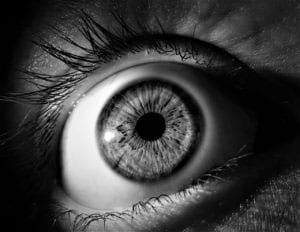Neuralgia
What is neuralgia?
Neuralgia is an intense (often described as burning or stabbing) pain caused by irritated or damaged nerves. Neuralgia can occur anywhere in the body and is often named and classified by the affected area.
- Trigeminal neuralgia: Disorder of the nerves of the face. Causes stabbing, and shock-like pains in affected parts of the face. Painful sensations may last anywhere from a few seconds to several minutes. Pain may coincide with muscle spasms. Typically affects only one side of the face.
- Glossopharyngeal neuralgia: This form of neuralgia is characterized by repeated episodes of pain in the tongue, throat, ear, and tonsils. It is suspected that damage or irritation to the glossopharyngeal nerve causes this disorder since all the affected areas are connected to it. During episodes, pain may last anywhere from seconds to minutes, and typically only affects one side of the face. Pain may be triggered by relatively common tasks such as swallowing, speaking, laughing, chewing, or coughing.
- Occipital neuralgia: Described as a piercing, throbbing, or shock-like headache. Occipital neuralgia affects the areas of the upper neck, back of the head, and region behind the ears. Some people also report pain in the scalp, forehead, and area behind the eyes. Occipital neuralgia usually affects only one side of the head and is related to damage or irritation of the greater and lesser occipital nerves.
What are the symptoms of neuralgia?
Across all forms of neuralgia, the most common, identifiable, and significant symptom is pain. Pain associated with neuralgia occurs in chronic episodes, and is often brief but intense. Pain is often described as similar to electrical shock and is often followed by dull aching. Pain may occur as a result of stimuli, the most common being touch, or without apparent cause. The severity, duration, occurrence, and localization of pain are variable depending on the individual, the type of neuralgia, and progression of the disease.
What causes neuralgia?
The causes of neuralgia are often associated with nerve irritation, dysfunction, or damage. Precise causes are specific to the form of neuralgia a person suffers from.
How is neuralgia diagnosed?
Diagnosing any form of neuralgia is dependent upon recognizing and identifying the characteristic symptoms of the disorder. Paroxysmal attacks of pain, lasting from seconds to minutes, that is intense, or sharp is the primary identifying factor for diagnosis. Other factors depend on ruling out other neurological, or disease based causes for pain. Blood tests, MRI, CT Scan, and X-rays may all be ordered to assist in ruling out other diagnoses.
What are the treatments for neuralgia?
Treatment options for neuralgia depend somewhat on the individual and the form of neuralgia present. In general, medication, and forms fo surgery may aid in relieving symptoms. Anticonvulsant medications used to block nerve firing may be effective. Examples include carbamazepine, topiramate, phenytoin, and valproic acid. Tricylci antidepressents such as amitriptyline, and nortriptyline may be used to treat recurring pain. Analgesiacs, and opiods are often unable to treat pain associated with neuralgia. In cases in which medicine is not effective, or neuralgia is extreme, surgical procedures such as rhizotomy, or neurectomy may by attempted with some risk. In some cases, alternative therapies combined with medication may assist in treatment. Examples include exercise (low impact), yoga, creative visualization or meditation, aromatherapy, acupuncture, biofeedback, vitamin therapy, nutritional therapy, and electric stimulation of nerves.
Where can I find out more about neuralgia?
Neuralgia Articles









